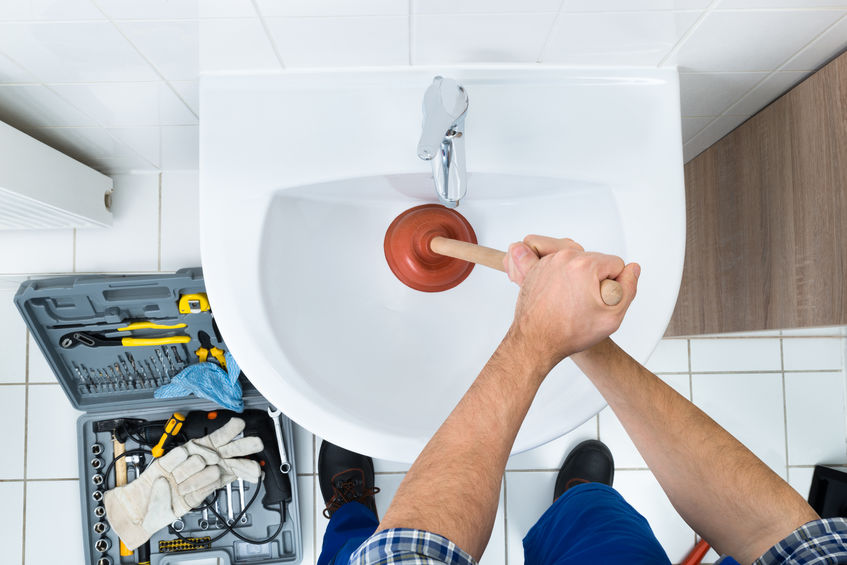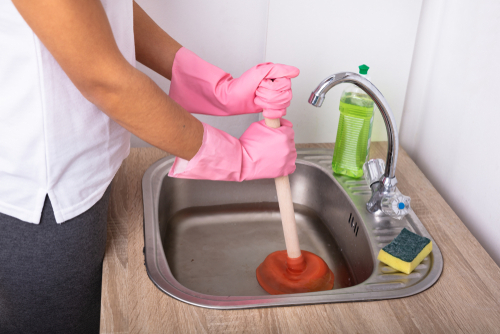Effective Plunger and Drain Cleaners Techniques: Top Guidelines
Effective Plunger and Drain Cleaners Techniques: Top Guidelines
Blog Article
Here on the next paragraphs you will find a lot of incredibly good points on the subject of How To Use Your Toilet Plunger Correctly in 5 Easy Steps.

Introduction
Appropriate maintenance of family drains is vital for avoiding clogs and guaranteeing smooth water flow. One of the key devices in every homeowner's toolkit is the bettor, together with numerous drainpipe cleaners created to deal with persistent obstructions effectively. This write-up checks out just how to use plungers and drain cleaners efficiently to keep your drains pipes streaming easily.
Area 1: Recognizing Bettors
Types of Plungers
There are several types of bettors available, each made for different types of drains and clogs. The most typical types include cup bettors, flange bettors, and accordion bettors.
Exactly How Plungers Job
Plungers service the principle of developing pressure and suction to displace clogs. When correctly used over a drainpipe, they create a vacuum cleaner that can take out particles or separate clogs.
Picking the Right Plunger
Choosing the best plunger relies on the type of drainpipe and the nature of the obstruction. Mug plungers are excellent for sinks and tubs, while flange plungers are much better fit for bathrooms because of their style.
Usual Blunders with Plungers
Staying clear of these mistakes ensures reliable plunging: improper seal around the drainpipe, insufficient force, and unclear bordering debris.
Area 2: Making Use Of Plungers Efficiently
Prep work
Prior to diving, guarantee the plunger covers the drainpipe entirely and forms a tight seal. Clear any visible particles around the drainpipe opening.
Strategy
Begin with gentle diving activities to construct suction. Rise pressure slowly, utilizing a stable rhythm. Repeat as required up until the drainpipe gets rid of.
Repairing Tips
If diving doesn't function, attempt adjusting the seal, using petroleum jelly for a much better seal, or utilizing a various type of plunger.
Area 3: Comprehending Drainpipe Cleaners
Types of Drain Cleansers
Drain cleaners can be chemical or chemical. Chemical cleaners make use of solid chemicals to liquify obstructions, while enzymatic cleaners use natural enzymes to break down organic matter.
Just How Drain Cleaning Company Work
Chemical cleansers react with obstructions to dissolve them, while enzymatic cleansers break down natural materials like hair and oil without damaging pipes.
Safety and security Factors to consider
Constantly put on gloves and eye protection when using chemical drain cleansers. Guarantee ample air flow and comply with maker guidelines meticulously.
Eco-Friendly Alternatives
Think about using vinegar and cooking soft drink or enzyme-based cleansers for environmentally friendly choices that are more secure for pipes and the environment.
Section 4: Utilizing Drain Cleaning Company Efficiently
Application Techniques
Pour chemical cleaners directly into the drainpipe opening. Enable them to work for the advised time before flushing with warm water. Chemical cleaners need to rest over night.
Safety measures
Stay clear of mixing different kinds of cleaners, as this can create harmful fumes. Never ever utilize chemical cleaners in conjunction with a plunger, as splashing can occur.
Handling Stubborn Blockages
For persistent obstructions, think about using a pipes snake or calling a professional plumbing technician to avoid damage to pipelines.
Conclusion
Finally, recognizing how to utilize bettors and drainpipe cleaners properly is crucial for preserving healthy pipes systems. By selecting the right tools and techniques, homeowners can tackle minor blockages and stop major pipes issues down the line.
How To Properly Use A Plumbing Snake To Clear Drains
When any drain clogs in our home arise, we tend to gravitate toward the plunger and little else. In cases where the plunger and its vacuum-created pressure are not able to clear clogs, many immediately move to harmful chemicals or simply call their plumber to fix the issue.
we’re happy to help with all drain cleaning needs and concerns. This includes informing you on a few other home remedies you may have at your disposal for minor to moderate clogs, one of which is the use of a plumbing snake. Many people have never used one of these before – let’s go over the steps to take when your drain clogs and you have a plumbing snake available.
Attempt Plunger Use
The first step here, as we noted above, should indeed be to grab your plunger when you notice a drain clog and attempt to resolve it this way. If you’re unsure how to use a particular type of plunger, our plumbers can answer any questions you have. If this doesn’t do the trick, however, you move on to the snake.
Locate And Prepare Snake
A plumbing snake is a metal or plastic device that’s generally about a quarter of an inch thick. It’s design with significant extensions, meant to reach down into your clogged drain and push the clog out. Snakes also contain drain augers that will latch onto and push stubborn blockages.
If your plunger doesn’t clear a clog, locate your snake and bring it to the drain in question. We also recommend keeping a bucket nearby to collect the clog once you pull it out, plus we’d advise wearing goggles and possibly protective gloves.
Feed Snake
Once you’re ready to go, feed the snake slowly down the drain, using the crank device it comes with to keep it moving until it finds the clog. Once this happens, much of the clog will be latched onto the coil so you can pull it out, while the rest will simply break up and flow downward.
Detach Debris
Remove the snake slowly from the drain, and once you’ve done so, pick off any debris that’s stuck to the coil. This is another area where wearing gloves is a must.
Flush Drain
Finally, take a few minutes to ensure the snake has done its job correctly. If you’ve been using it on a toilet, flush the toilet a couple times and make sure everything flows well. If you’ve used it on a different drain, flush it with some room temperature water.
https://www.mybuddytheplumber.com/blog/how-to-properly-use-a-plumbing-snake-to-clear-drains/

Application Techniques
Pour chemical cleaners directly into the drainpipe opening. Enable them to work for the advised time before flushing with warm water. Chemical cleaners need to rest over night.
Safety measures
Stay clear of mixing different kinds of cleaners, as this can create harmful fumes. Never ever utilize chemical cleaners in conjunction with a plunger, as splashing can occur.
Handling Stubborn Blockages
For persistent obstructions, think about using a pipes snake or calling a professional plumbing technician to avoid damage to pipelines.
Conclusion
Finally, recognizing how to utilize bettors and drainpipe cleaners properly is crucial for preserving healthy pipes systems. By selecting the right tools and techniques, homeowners can tackle minor blockages and stop major pipes issues down the line.
How To Properly Use A Plumbing Snake To Clear Drains
When any drain clogs in our home arise, we tend to gravitate toward the plunger and little else. In cases where the plunger and its vacuum-created pressure are not able to clear clogs, many immediately move to harmful chemicals or simply call their plumber to fix the issue.
we’re happy to help with all drain cleaning needs and concerns. This includes informing you on a few other home remedies you may have at your disposal for minor to moderate clogs, one of which is the use of a plumbing snake. Many people have never used one of these before – let’s go over the steps to take when your drain clogs and you have a plumbing snake available.
Attempt Plunger Use
The first step here, as we noted above, should indeed be to grab your plunger when you notice a drain clog and attempt to resolve it this way. If you’re unsure how to use a particular type of plunger, our plumbers can answer any questions you have. If this doesn’t do the trick, however, you move on to the snake.
Locate And Prepare Snake
A plumbing snake is a metal or plastic device that’s generally about a quarter of an inch thick. It’s design with significant extensions, meant to reach down into your clogged drain and push the clog out. Snakes also contain drain augers that will latch onto and push stubborn blockages.
If your plunger doesn’t clear a clog, locate your snake and bring it to the drain in question. We also recommend keeping a bucket nearby to collect the clog once you pull it out, plus we’d advise wearing goggles and possibly protective gloves.
Feed Snake
Once you’re ready to go, feed the snake slowly down the drain, using the crank device it comes with to keep it moving until it finds the clog. Once this happens, much of the clog will be latched onto the coil so you can pull it out, while the rest will simply break up and flow downward.
Detach Debris
Remove the snake slowly from the drain, and once you’ve done so, pick off any debris that’s stuck to the coil. This is another area where wearing gloves is a must.
Flush Drain
Finally, take a few minutes to ensure the snake has done its job correctly. If you’ve been using it on a toilet, flush the toilet a couple times and make sure everything flows well. If you’ve used it on a different drain, flush it with some room temperature water.
https://www.mybuddytheplumber.com/blog/how-to-properly-use-a-plumbing-snake-to-clear-drains/

I'm very excited about How to Unclog Your Sink with a Plunger and I really hope you liked our blog entry. Sharing is good. Helping others is fun. Thanks so much for taking the time to read it.
Contact Us Today Report this page